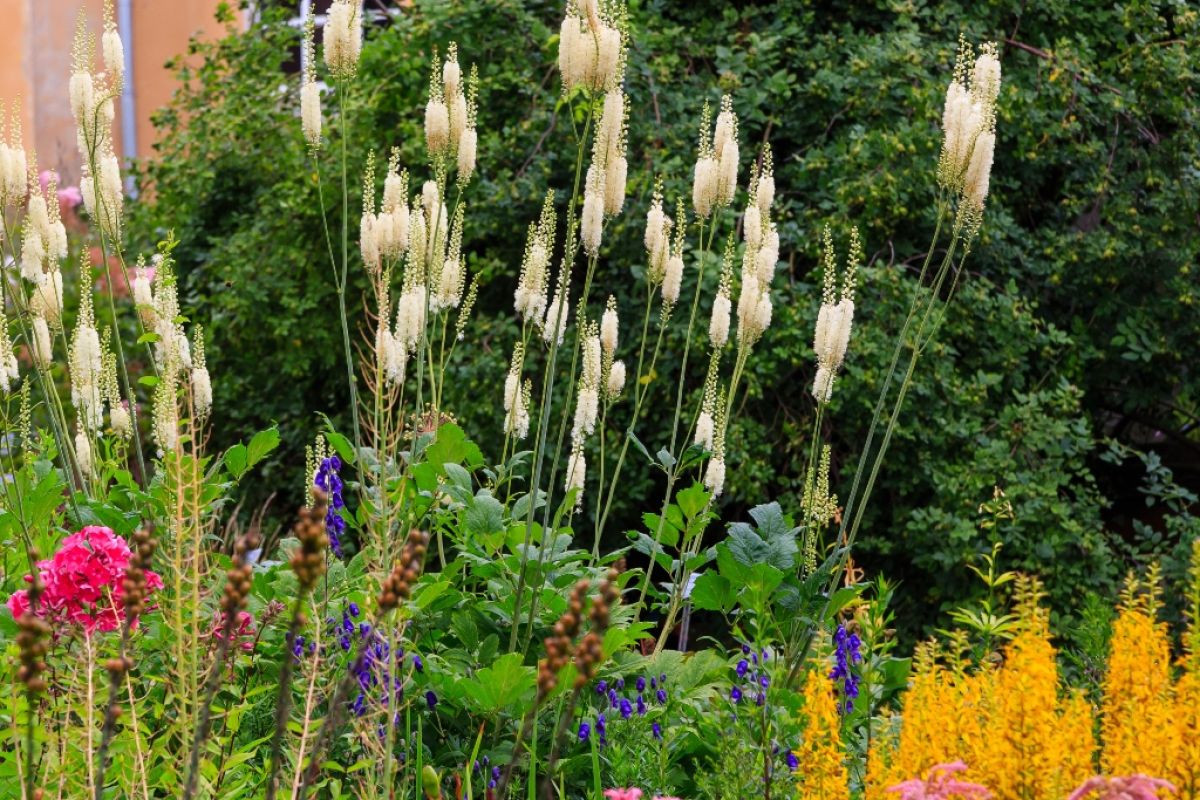The Native Americans told the colonists to use it to treat fevers, lumbago, rheumatism, and snake bites with a medicine made from the roots. Its common names became bugbane and squawroot. The leaves are coarse and toothed, and the plant produces clumps of leaves, as well as tall, slender racemes of delicate white flowers that can grow up to six feet in midsummer.
The plant likes light shade, rich soil, and frequent water. The flowers are not available commercially but are used as cut flowers from the garden where they can be striking in arrangements. The spires have also given rise to the folk name of fairy candles.
To create more plants, it works well to divide them and take root cuttings as it is rare to find them in nurseries. Plants do, however, take a few years to mature but make striking and ethereal accents in shade gardens.
This is Moya Andrews and today we focused on Cimicifuga.










